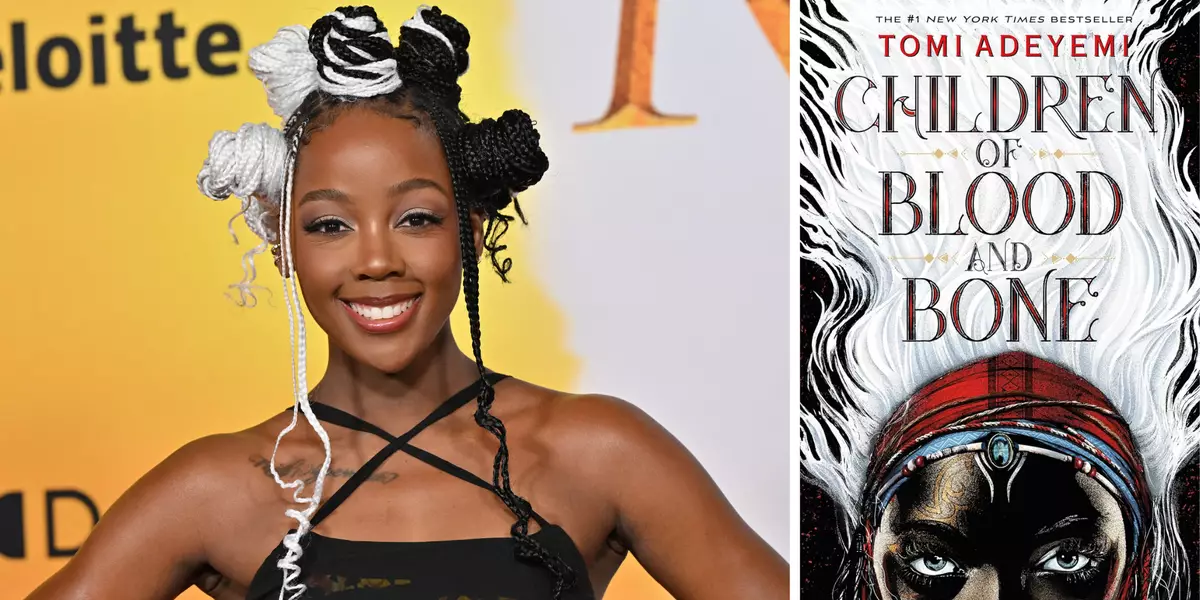Tomi Adeyemi’s acclaimed YA novel, “Children of Blood and Bone,” is set to leap off the printed page and onto the cinematic landscape, a moment anticipated by countless fans and literary enthusiasts alike. This adaptation not only mirrors the intrinsic complexity of its source material but also marks a pivotal moment in the representation of African culture and magic within mainstream media. As the first book in the “Legacy of Orïsha” trilogy, Adeyemi’s tale has established itself as a landmark in modern literature, weaving a narrative that emphasizes themes of resilience, identity, and the quest for justice. Now, with Paramount Pictures at the helm, the film promises to capture the imagination of audiences worldwide.
The rights to the adaptation initially fell into the hands of Fox 2000 in 2017, well before the book’s immense success. However, after a series of transformations culminating in Disney’s acquisition of Fox 21st Century, the rights eventually lapsed, paving the way for Paramount’s revival of the project. This acquisition ignites anticipation, especially since studio leadership has prioritized this project, signaling a commitment to quality storytelling that resonates with the book’s devoted fanbase.
A Rich Tapestry of Characters
At the heart of “Children of Blood and Bone” lies Zélie Adebola, whose journey unfolds in the richly imagined world of Orïsha—a land deeply inspired by West African traditions and storytelling. In a realm where magic has been systematically eradicated due to oppressive governmental forces, Zélie, alongside her brother Tzain, embarks on a pivotal quest. Their mission is not merely personal; it encompasses a larger struggle against tyranny and the reclamation of their heritage and magic. The interplay with royal characters—Princess Amari and Prince Inan—adds layers of complexity, showcasing varied perspectives in an age-old battle between oppressor and oppressed.
The cast assembled for this adaptation speaks volumes about the studio’s commitment to authenticity and representation. Thuso Mbedu’s portrayal of Zélie is eagerly awaited, alongside the talents of Amandla Stenberg, Tosin Cole, and Damson Idris. Their collective energy is expected not only to breathe life into characters but to elevate the narrative into an exploration of intricate relationships shaped by socio-political realities. Additionally, the supporting cast, including industry heavyweights like Viola Davis and Chiwetel Ejiofor, assures a performance depth that is both dynamic and culturally resonant.
The Visionary Team Behind the Lens
One of the most encouraging aspects of this adaptation is the hands-on involvement of Tomi Adeyemi herself. As she collaborates closely with director Gina Prince-Bythewood—renowned for her previous works that center female storytelling—audiences can expect a film that honors the book’s essence while exploring its themes through a visually stunning lens. Adeyemi’s own reflections on the collaborative process illuminate the synergy between the two, emphasizing a shared vision to portray the complexities of women’s narratives against a backdrop of action and vibrant cinematography.
In a recent interview, Adeyemi expressed not only her admiration for Prince-Bythewood but also the unique challenges and joys that come with adapting a beloved story. This collaboration seems rooted in a mutual respect for storytelling and cultural representation, ensuring that the adaptation will resonate with audiences on multiple levels. The promise of “Children of Blood and Bone” transcends typical fantasy adaptations; it seeks to create an immersive world that showcases true narratives often relegated to the background.
Looking Ahead: A Cinematic Milestone
As we mark our calendars for the film’s release on January 15, 2027, excitement is palpable. The production’s completion, highlighted by Prince-Bythewood’s joyful announcement of wrapping up filming in various locales, adds to the anticipation. With rich landscapes and culturally attuned artistry expected to translate from script to screen, “Children of Blood and Bone” aims to set new standards in cinematic storytelling.
Whether it’s the intricate relationships that form the backbone of the narrative or the undeniable artistry of its creators, there is an electric current of enthusiasm surrounding the film. In an era where representation is critical, “Children of Blood and Bone” stands at the intersection of hope, creativity, and cultural pride, promising both spectacle and profound resonance for audiences eagerly awaiting this transformative journey.

